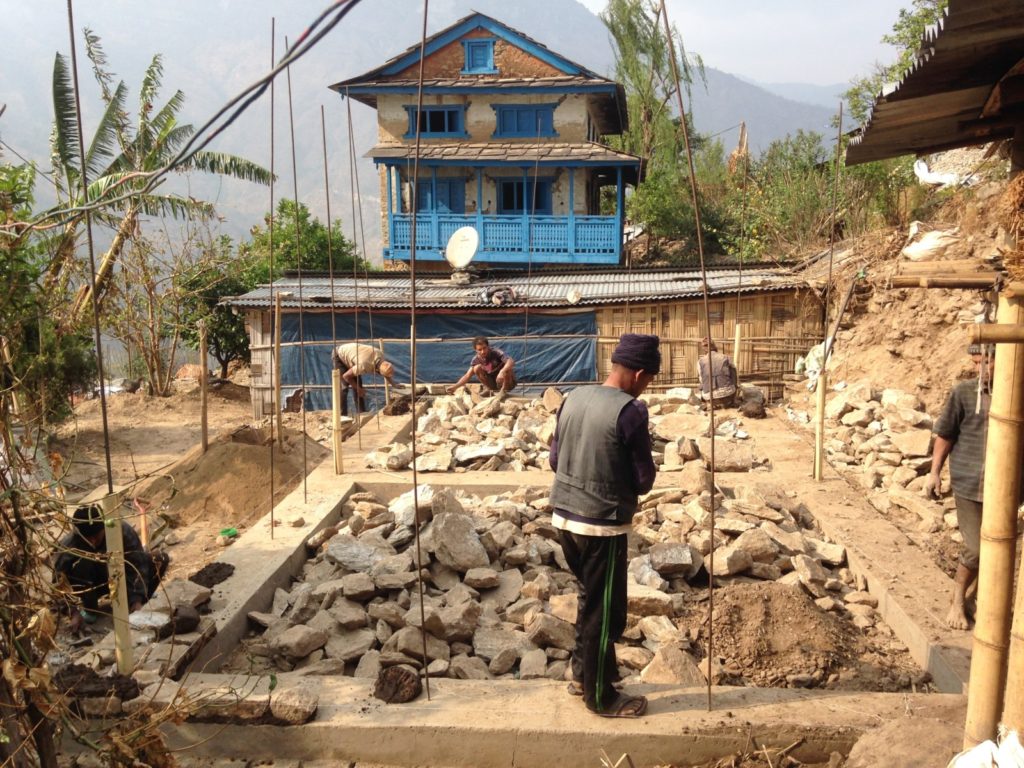
The impact of natural hazards on vulnerable communities can be devastating, causing fatalities, damaging houses and livelihoods, and pushing people into poverty. These disasters make them even more vulnerable. A growing line of research identifies actions and tools to reduce vulnerability and make communities more resilient. An interesting and crucial part of this research investigates the role of housing in the vulnerability to hazards. We talk today about this promising research field with Dr Eefje Hendriks. Eefje is currently an assistant professor in ‘Disaster risk, resilience, and humanitarian assistance’ at the Faculty of Geo-Information Science and Earth Observation (ITC), Department of Applied Earth Sciences (AES) of the University of Twente. Eefje was recently awarded a VENI grant by the NWO (Dutch Research Council), aiming to understand how assistance can be personalised to the needs of affected communities. In 2020, she obtained her PhD with a study on post-disaster reconstruction and what makes communication effective in reducing housing vulnerability.

Dr Eefje Hendriks
Hi Eefje! Thank you for answering my questions today. What brought you to study safe housing in areas prone to natural hazards?
Improving housing safety is something I feel I need to do because I can. When I worked on a slum integration project in Buenos Aires, I felt inequality, guilt, and an obligation to improve living conditions. These vulnerable circumstances sharply contrast with the type of architecture I was taught to design in the Netherlands. Since that project in 2011, I have sought to use my privileged education in building technology and architecture in places where a safe house was not a given. Especially in hazard-prone areas in low-income communities, building technology can really make a difference in safe housing.
Why are the best building techniques and materials not applied in post-disaster reconstruction despite NGOs and government involvement? Where does the shortcut happen?
The problem is that we currently cannot fully answer that question. It is not always clear why people do not build back safer after disasters despite the assistance they got. We have to understand better how people make decisions before deciding how to give support. It is my goal to find out what assistance works and when!
There is a great effort from humanitarian and government organisations to reduce disaster risks for those most vulnerable, building resilience in hazard-prone areas. Unfortunately, disaster-affected populations often rebuild similar housing that caused the impact in the first place on the same vulnerable locations. Crucial guidelines to protect the built environment are often not applied. We must study decision-making and understand why.
There is a significant understanding of construction techniques that make houses safer, specifically in case of earthquakes, hurricanes, or floods. The lack of technology is NOT the core problem. However, recovery assistance is often insufficiently adapted to the people in need and, therefore, ineffective. There is not a one size fits all solution to rebuilding after a disaster. Every disaster situation is different. What works in the Philippines does not necessarily work in Nepal or Haiti in terms of materials, techniques, communication and culture. At the moment, there are no strategies to adapt assistance to individual decision-making and local conditions. Current behavioural approaches miss links between the disaster context, assistance, and construction decisions to safer houses. Therefore, we need an interdisciplinary understanding.
What are important social and cultural aspects to consider behind assistance interventions, making them more effective in enabling the safety of disaster-affected communities?
A new housing design is more than something you can plug and play with; no one size fits all. I argue that building a different type of house is a social innovation instead of a product innovation, profoundly linked to tradition and culture. The introduction of a new way of building a house does not only require technical knowledge and understanding; it is mainly a call for a change in a social process, such as another way of living and changing norms and values within the community. It requires a study of social dynamics, norms, and processes. The community is crucial for the acceptance of a new way of building.
To understand what makes assistance effective, I use different social scientific theories. For example, analyse behaviour using motivation, ability and opportunity. This theory says that if you are highly motivated, able, and have the opportunity, it is likely that you will act. I have explained this model in an earlier publication [1]. Especially when you look at what motivates people, this is strongly linked to social and cultural aspects. Is the technology perceived as helpful, applicable, and acceptable? These perceptions are strongly linked to the social dynamics in affected communities.
In my previous research, I looked at knowledge awareness, knowledge needs, knowledge acquisition through networks of trusted actors, drivers and barriers that people perceive, and actual housing safety. What is perceived as necessary? What is perceived as safe? Where do people traditionally look for knowledge? Who is trusted with the introduction of new knowledge? For example, the most appropriate materials for the construction techniques depend, among others, on what is locally available, repairable, and culturally acceptable for the people affected. With proper treatment and detailing, bamboo is a great option because it has great properties to withstand natural forces, yet it often remains seen as a poor material. I have seen an example in the Philippines where beams were only acceptable in a flat position (both long sides down). In Pakistan, safer locations are considered irrelevant because it is believed out of our own influence to decide when we will live or die.

Reconstruction after the 2015 earthquake in Nepal of government-approved two-room house design next to temporary houses and partly damaged traditional houses in rural areas. (Photo credit: Dr Hendriks, with permission)
Your work focuses on vulnerable communities in low-income countries. Would you say that vulnerable communities in medium-high income countries are always ‘immune’ to similar issues in post-disaster reconstruction?
Of course, there are also vulnerable communities in medium-high-income countries that are indeed not immune to risks. However, I have chosen to focus on low-income communities in low-income countries because natural hazards disproportionately impact them. Disasters push people back into poverty. We see that unsafe houses are posing increasingly common threats there. These communities primarily reconstruct informally, often without the interference of formally trained masons or architects, and with limited access to important technical information. Therefore, these informal houses are often the least prepared for the impact of natural hazards. In these communities, knowledge to build back safer can really make a positive impact.
In a world where climate change is exacerbating natural hazards impacts, in particular, in some regions of the world, what is, in your opinion, the priority action around urban planning and housing to reduce natural hazard vulnerability?
On our planet, vulnerable communities are already severely impacted by climate change, especially in low-income countries. We see people losing their homes due to floods, rising sea levels, landslides, drought and heat, affecting food security and water access. Urban areas are becoming increasingly hot, and hurricanes repeatedly affect the same vulnerable areas. For a big part, climate change is caused by wealthy countries. Apart from mitigating climate change, it is our responsibility to help vulnerable people cope and find ways to adapt to climate change. Priority actions differ, based on the risks that regions face. However, we can work in areas where disasters recur and address predictable hazards. Changing where and how we live can help to reduce vulnerabilities. A sustainable, safe, and comfortable built environment is crucial to keep the world liveable.
References
[1] Hendriks E. and Stokmans M. (2020) Drivers and barriers for the adoption of hazard-resistant construction knowledge in Nepal: Applying the motivation, ability, opportunity (MAO) theory. International Journal of Disaster Risk Reduction, Volume 51,101778, https://doi.org/10.1016/j.ijdrr.2020.101778.
